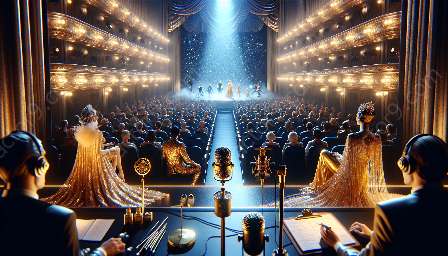When it comes to character development in voice acting, adapting performance techniques for non-human characters presents a unique set of challenges and opportunities. In this comprehensive exploration, we will delve into the intricacies of voicing non-human characters and how voice actors can effectively bring these characters to life.
Understanding Character Development
In the realm of voice acting, character development forms the foundation of compelling storytelling. Regardless of whether the character is human or non-human, the process of understanding the character's background, motivations, and emotional journey remains essential. When approaching non-human characters, voice actors must consider the unique traits, quirks, and abilities that distinguish these characters from their human counterparts.
Conveying Emotions and Personality
One of the critical aspects of adapting performance techniques for non-human characters is the ability to convey emotions and personality through voice alone. Unlike human characters, non-human characters may exhibit a wide range of emotions and behaviors that require innovative vocal techniques to effectively communicate. Voice actors must explore various vocal tones, inflections, and cadences that authentically capture the essence of these non-human characters, drawing upon their creativity and versatility.
Exploring Vocal Modulation and Sound Effects
Voice actors specializing in non-human characters often rely on vocal modulation and sound effects to bring these characters to life. Whether it's mimicking otherworldly creatures, fantastical beings, or robotic entities, the incorporation of specialized vocal techniques and sound manipulation is paramount. Through the skilled use of pitch variations, vocal resonance, and sound editing tools, voice actors can craft distinct voices that align with the unique attributes and characteristics of non-human characters.
Physicality and Movement in Voice Acting
While non-human characters may not possess human physical attributes, their movements and mannerisms can significantly influence their vocal portrayal. Voice actors are encouraged to embody the physicality of non-human characters, imagining their gestures, facial expressions, and overall presence to enrich their vocal performance. By incorporating physicality into their voice acting, actors can infuse greater authenticity and expressiveness into the representations of non-human characters.
Embracing Creativity and Adaptability
Adapting performance techniques for non-human characters demands a high degree of creativity and adaptability from voice actors. Whether voicing mythical creatures, extraterrestrial beings, or sentient AI, the ability to innovate and experiment with vocal expression is paramount. Voice actors must continuously explore unconventional vocal methods, embrace imaginative interpretations, and adapt their craft to suit the unique demands of non-human characters.
Mastering the Art of Character Differentiation
One of the key challenges in voicing non-human characters lies in mastering the art of character differentiation. Voice actors must excel in creating distinct vocal identities for various non-human characters, ensuring that each character's voice is memorable, relatable, and convincingly portrayed. Through meticulous attention to detail and a deep understanding of character traits, voice actors can carve out distinct vocal landscapes for non-human characters, enriching the narrative and engaging the audience.
Conclusion
Adapting performance techniques for non-human characters in voice acting requires a harmonious blend of creativity, technical proficiency, and a thorough understanding of character development. By embracing the complexities and nuances of voicing non-human characters, voice actors can uplift storytelling and immerse audiences in captivating narratives that transcend the boundaries of traditional character portrayal.




























